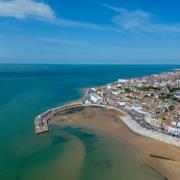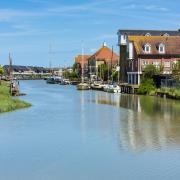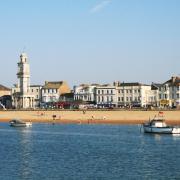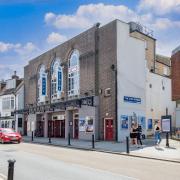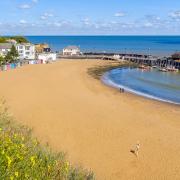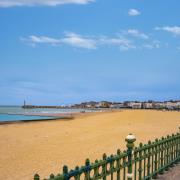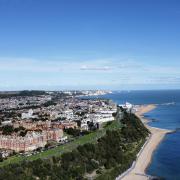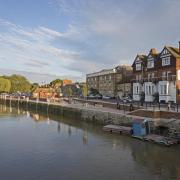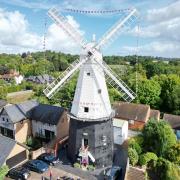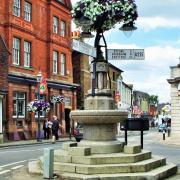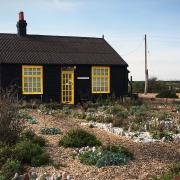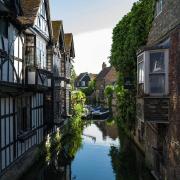Nestling at the foot of the beautiful North Downs, Otford is a thriving village on the River Darent with a past steeped in history
Reach for the stars
Otford has a unique claim to fame. The village and its surrounding countryside are home to the largest scale model of the solar system in the world. The model was built as part of the millennium celebrations and visitors are invited to walk from 'The Sun', represented by a dome in the recreation ground, to another nine 'planets' situated on pillars. Their locations can be found on a sign close to The Sun or by using the free information leaflets available from the local Heritage Centre. To walk to every planet takes around one hour 45 minutes with stops.
Historic houses
Otford High Street has been deemed a conservation area. Here you will find many beautiful historic houses and cottages dating back to the 15th century and beyond. They are still being used as family homes today and are therefore not open to the public, but it is still possible to admire their beauty and architecture.
Look out for Broughton Manor, Pickmoss, a timber-framed hall house, and The Old Parsonage, to name but a few.
Gifts galore
While many villages have lost their local stores, Otford has maintained an impressive selection of specialist outlets and curiosity shops. Take a wander down the High Street and you'll find a milliner, a designer dress shop, an art gallery, plus jewellery and antique dealers. Round the corner in Otford Road is another parade of shops which includes a specialist tennis equipment outlet.
Head for the head's house
First stop when you arrive in Otford should be the Heritage Centre and Parish Office in the High Street.
This former headmaster's house with its own well was designed, along with the school, in 1872 by English architect Sir Thomas Graham Jackson and converted into the centre 10 years ago. An Aladdin's cave of information and artefacts charting the area's history over 4,000 years, look out for the painting around the walls of the main room showing a timeline of the key eras and dates in Otford's history.
That's entertainment
Otford is a thriving community and this can be measured by the number of organisations, clubs and sports that flourish in the village. There are also plenty of venues for them to use, including the Church Hall and the Memorial Hall which stand almost next to each other alongside the free car park that leads into the recreation ground. Every weekend visitors will find some kind of entertainment in one of the venues. Music lovers should also keep an eye out for the regular Otford Rock gigs featuring professional bands and held in the Memorial Hall.
Walk this way
As well as the Solar system planet walk, there are a number of public footpaths criss-crossing their way through Otford village that will lead you to beautiful views of the North Downs and surrounding countryside. Some will take you to points of interest, including the railway station, which dates back to 1880, a former chalk pit that is now a recreational area, and Otford Mount. Alternatively, make your way to the 61-acre Oxenhill Shaw, formerly part of the hunting park for the Archbishop's palace. The scrub and woodland provides a perfect habitat for an abundance of birds, butterflies and other wildlife.
Visitors like to luv-a-duck
The residents of the duck house on Otford Pond have been a feature of the village for several years now. They will never go hungry, due to the number of visitors who like to indulge in the age-old pleasure of feeding the ducks. The attractive pond with its willow trees forms a natural roundabout in the centre of the village and is unusual in that it has been granted listed status. The pond is thought to date back to Anglo Saxon times, when it was probably used as a drinking hole for local livestock. It is currently undergoing renovation work, but is expected to be back to its best in the next few months.
Church notes
Sitting opposite Otford Pond on the other side of the village green is St Bartholomew's Church. The structure dates back to the Norman Conquest and has since had other extensions and more bells added to the belfry. Visitors are welcome to wander through the church, where they will find an interesting and attractive mix of architectural features. Beautiful brass chandeliers hang from the roof and the pews all have a little closing door. There is a host of historic crests and coats of arms to study, 17th-century glass panels and some unusual monuments.
Wet your whistle
Fancy a drink or a bite to eat? Get yourself a cuppa and a cake in the Willow Tea Rooms overlooking Otford Pond. Alternatively, the four pubs in Otford High Street are well known for their delicious menus. The Woodman and The Crown date from the 18th century. The Bull has many traditional features including two impressive fireplaces, and The Horns is an old 15th-century London to Brighton coaching stop. Halfway between is The Forge House restaurant, where you can enjoy a meal surrounded by many period features.
Palace fit for a King
One of the largest and most impressive palaces in Europe once stood close to the centre of Otford. Built around 1518, it was home to the Archbishop of Canterbury until it was surrendered to Henry VIII in 1537. The ruins of an old tower are all that remains, but you can still view this historic site, now a scheduled ancient monument, by taking the footpath that runs close by. The Heritage Centre houses a fine model of how the Archbishop's palace would have looked in all its glory.



